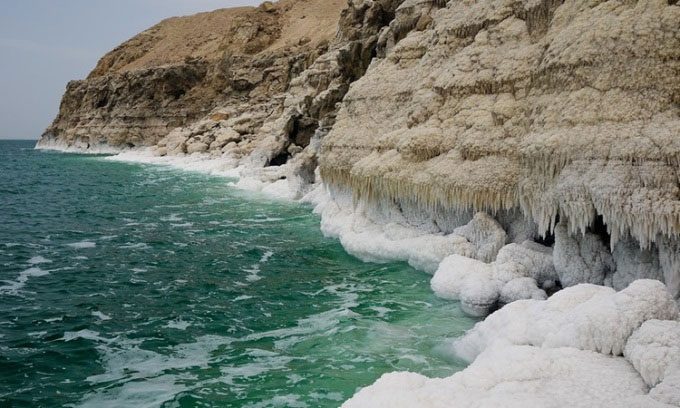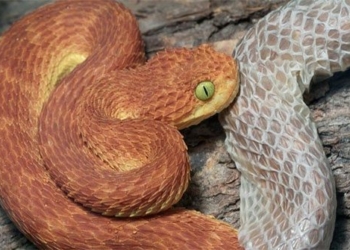The Dead Sea has a salinity nearly 10 times that of the ocean due to water evaporation leaving salt deposits in the water and settling at the bottom of the lake.
The Dead Sea is one of the saltiest bodies of water on the planet. In fact, it is an inland lake rather than a sea, located between Jordan, Israel, and Palestine. The complete absence of fish, birds, or plant life is evidence that this is truly an inhospitable environment for living organisms, according to IFL Science.

The Dead Sea ranks second in the world for salinity. (Photo: iStock).
The extreme salinity of the Dead Sea is due to its water supply from the Jordan River, but it has no outlet, meaning water can only escape through evaporation, leaving minerals and salts behind. Consequently, the Dead Sea has become increasingly salty over time as salt accumulates. Currently, it is estimated that this body of water is 9.7 times saltier than the ocean.
The rising salinity is exacerbated by human activity, which has reduced the flow of water from the Jordan River to the Dead Sea. Due to damming and water diversion for agricultural purposes, the amount of fresh water available to dilute the salty lake has gradually decreased. The problem is further worsened by the region’s heat and the mineral springs along the shores of the Dead Sea due to tectonic activity.
The Dead Sea is the second saltiest lake in the world, following Lake Gaet’ale located in the Danakil Depression, Ethiopia. This lake has a salt concentration of 43.3%, higher than the 34% of the Dead Sea. In comparison, the average salt concentration in the ocean is 3.5%.
The extremely high salinity makes the water of the Dead Sea resemble olive oil mixed with sand, according to NASA’s Earth Observatory. Any object that enters it can float easily. The water level of the Dead Sea is also decreasing at a rate of about 1.2 meters per year due to human activities, which further increases its salinity.
The Dead Sea Observatory has discovered that with the increase in salinity, salt at the bottom of the lake is settling, creating an additional layer of salt a few centimeters thick each year. This occurs through a process called double diffusive convection, where warmer water sinks to cooler lower layers and loses its ability to hold salt as it cools. Instead, the salt accumulates in crystal form. This process occurs relatively quickly due to the Dead Sea already being at its saturation limit for salt in the water.
The only living organisms found in the Dead Sea are microorganisms. Since the 1930s, scientists have known that the Dead Sea is not entirely devoid of life. It is home to a type of microorganism existing at a density of about 1,000 – 10,000 archaea per milliliter. In 1992, the halophilic algae Dunaliella parva bloomed on the lake’s surface, likely due to rainfall. Although D. parva is green algae, the phenomenon causes the Dead Sea to turn red due to the high concentration of bacterioruberin protein.




















































